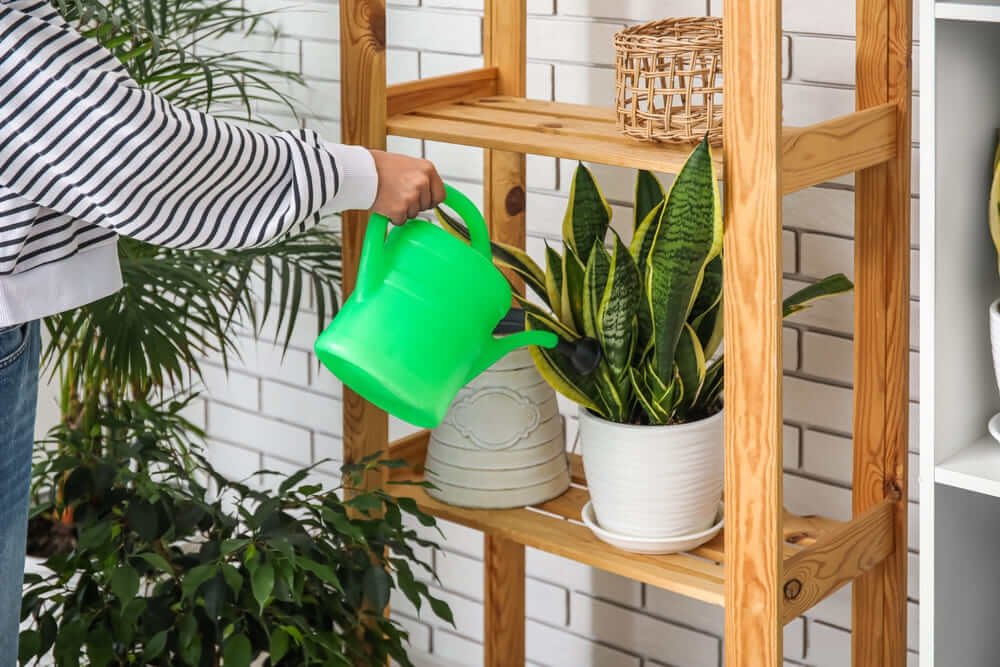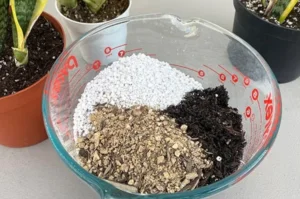Snake plants are known for their resilience, but improper watering can still lead to issues like root rot or dehydration. Understanding the right watering technique, frequency, and common mistakes can ensure a thriving plant.
How Often Should You Water a Snake Plant?
The key to proper snake plant watering is letting the soil dry out completely between watering sessions. Overwatering is one of the most common reasons these plants struggle. Factors like pot size, temperature, humidity, and light exposure all impact the watering schedule.
While watering frequency varies, a general guideline is every two to six weeks, depending on the season. If unsure, observing the plant’s condition and soil moisture is the best approach. Knowing when to water a snake plant can make a significant difference in its health.
What are the Signs of Overwatering?
Overwatering is a serious threat, leading to root rot and fungal infections. If the leaves appear mushy, yellowing, or drooping, it’s a clear warning. The soil may also develop a foul smell due to excess moisture. If you’ve already encountered these symptoms, here’s how to save an overwatered snake plant before it’s too late.
Why Does Pot Size Matter in Watering?
Many plant owners overlook the importance of pot size when determining watering needs. Larger pots retain moisture longer, while smaller ones dry out quickly. This affects how frequently the plant should be watered. Understanding why pot size matters ensures that you don’t accidentally overwater or underwater your plant.
Can a Snake Plant Live in Water?
Yes, snake plants can survive hydroponically in water. However, switching from soil to water requires special care. If you’re considering this method, learn more about how snake plants can live in water and what adjustments are necessary for their health.
Common Snake Plant Watering Mistakes to Avoid
Avoid these mistakes to keep your plant healthy:
- Overwatering: The #1 killer; leads to root rot.
- Underwatering: Causes wrinkled, droopy leaves.
- Using the Wrong Soil: Regular potting soil retains too much moisture.
- Watering on a Schedule: Always check moisture levels instead.
- Ignoring Seasonal Needs: Reduce watering in winter.
Common Snake Plant Watering Mistakes to Avoid – A complete list of dos and don’ts.
How to Water a Snake Plant
The best watering method prevents overwatering while ensuring deep hydration.
- Top Watering: Slowly pour water evenly around the base until the excess drains out.
- Bottom Watering: Place the pot in a tray of water for 10–15 minutes to allow moisture to soak up.
- Avoid Overhead Watering: Watering leaves can cause fungal issues.
What Is the Best Way to Water Snake Plants? – Discover the pros and cons of different watering techniques.
Factors That Affect Watering Needs
Several conditions impact how often a snake plant requires water:
- Light exposure – More light increases water evaporation, requiring more frequent watering.
- Humidity levels – Higher humidity means less water is needed.
- Temperature – Warmer temperatures accelerate drying, while colder temperatures slow it down.
Understanding these growth conditions helps in making better watering decisions.
Frequently Asked Questions (FAQs):
Should I water my snake plant with tap water?
Yes, but let it sit for 24 hours to let chlorine evaporate, or use filtered water.
Can I water my snake plant at night?
It’s better to water in the morning so excess moisture evaporates.
Final Thoughts
Watering a snake plant correctly is crucial for its longevity. By recognizing signs of overwatering, using the right pot size, and adjusting based on conditions, you can maintain a healthy plant. Whether you’re using the traditional watering method or exploring bottom watering, consistency, and observation are key to success.
Want to make sure your snake plant thrives? Start by checking your soil today and adjusting your watering routine based on what you’ve learned!






